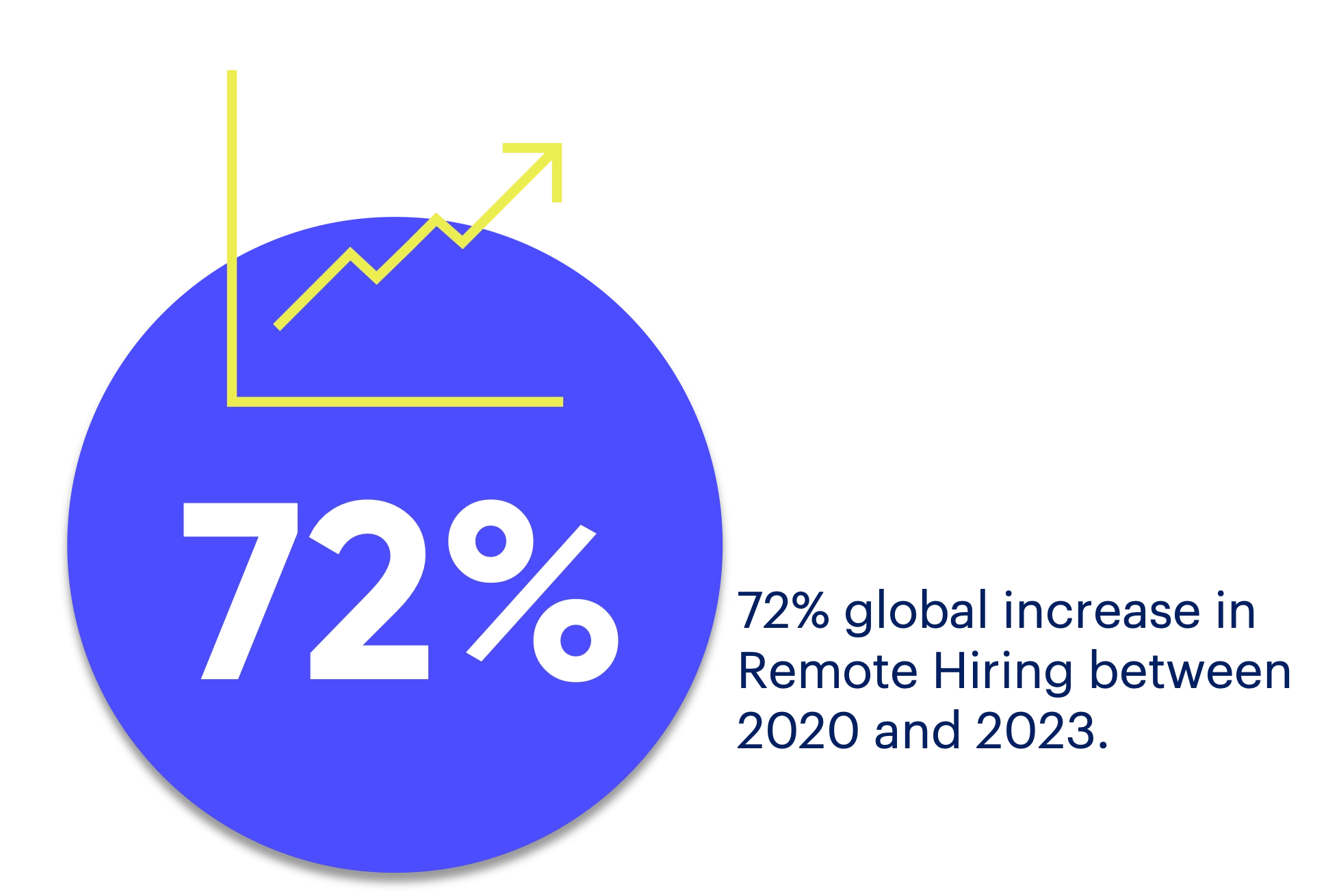Remote Work on the Rise
The Talmix Atlas is our biggest ever data report, combining a thorough analysis of our Talent Marketplace datasets (across both our international client base and 60,000+ talent network) with statistical insights from 181 countries – providing real-time global talent intelligence, and revealing key findings about workforce and talent trends across geographies in 2023.
This week, we're looking at remote work trends across key geographies, international businesses and our global talent network.
A Rising Trend
“Remote work” was the phrase on everybody’s lips in 2020 — but this ‘trend’, borne of necessity during the pandemic, has proved so successful for employers and employees alike, that it’s now widely accepted to be a permanent fixture around the world.
The remote shift has also precipitated a change in how businesses are developing their hiring strategies – one of the lesser-discussed wider advantages of the ‘remote’ shift lies in its capacity to completely reshape the talent market and open up access to a more diversified global talent pool for businesses to unlock and deliver on critical initiatives.
As companies lock into these wider global networks (the ‘extended workforce’), they can connect to previously unreachable talent, positively address diversity and inclusivity within the workplace, and drive greater innovation through access to fresh ways of thinking.
This ‘extended workforce’ is growing by the day too - the Talmix Talent network has increased 20% in the last 24 months, as more and more workers take steps into independence, as part of an ever-increasing desire to improve work/life balance, have more control over their career paths, and find work without geographical restraints.

Combining the two trends, many people who already work on an independent basis (especially in delivering more high-level initiatives) are used to working and managing remotely, and the instant readiness of this extended workforce makes them even more attractive to businesses looking to act quickly and efficiently on key initiatives.
As such, we’ve seen a massive 72% increase in remote hiring amongst clients on the Talmix Marketplace between 2020 and 2023, alongside a similar rise in remote job applications across our talent network (58%).
Remote job postings & applications are growing

Remote job postings are growing around the globe. Across the Talmix Marketplace, 1 in every 5 projects posted was listed as “remote-first” in 2022. Of these, EMEA has seen the biggest increase in remote hires at 34%.

The data supports the hypotheses above that businesses are certainly adjusting their hiring initiatives and factoring in longer-term remote working as part of their future workforce strategies - extending the typical talent pools through lifting geographical hiring barriers.
Regional Growth
The rise in job postings aligns to a similar rise in the number of remote job applications across our global talent network. The Middle East saw a staggering 95% increase in remote job applications in 2022.
Across over 100,000 job applications in APAC, Europe and the Middle East over the last 12 months, only 15% of talent applications have come from talent based in that region – truly highlighting the pivot in global employee expectations and an emphatic shift to remote preferences.

Diving deeper into job postings on across key APAC markets at Talmix, we can really see the uptick in both remote job postings and talent applications.

Strong growth can be seen in remote job postings across APAC, particularly in Singapore, India and the Philippines. India also leads the way in terms of remote job application growth, as it grew by 80% between 2020 and 2023. China recorded the slowest growth, with an increase of just 11%.
Remote Brings Results
The advantages of a global workforce are clear - increased diversity, access to new markets, and a broader talent pool to draw from.
Naturally, some industries are slower to change than others, and flexible work arrangements may not suit all roles. Looking across the Talmix Marketplace, the data shows that the technology, healthcare and finance sectors are much more remote-friendly than the retail and manufacturing industries. That is not say that these industries are resistant to change – in the manufacturing sector, for instance, we’re seeing a 20% rise in job postings listed as ‘hybrid’, across project managers and controllers in particular, indicating a growing awareness of the need to accelerate flexible working practices and gain competitive advantages.
Overall, the remote shift is certainly reshaping the international talent market and opening up access to a much more diversified global talent pool for businesses to unlock. The benefits of having a global workforce certainly far outweigh the challenges. That's why our data shows that the majority of businesses are thinking global and remote first when it comes to hiring talent - the most successful Talmix clients do seem to be the ones who build the wider, deeper and more dynamic talent pools to meet, and anticipate their shifting business needs and expectations.

